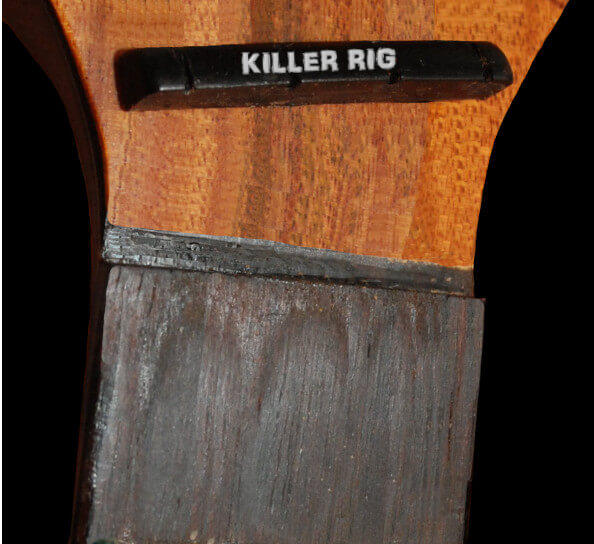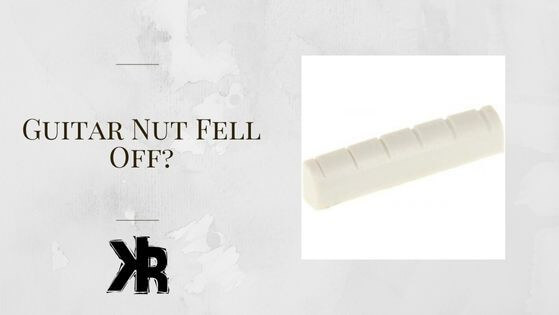Table of Contents
There is no worse feeling than having your beloved guitar fall apart. But sometimes, even when you have done your best to take good care of it, the worst can happen.
Once, I was changing the strings and my electric guitar nut fell off! I was alarmed and couldn’t help but wonder what to do.
If your guitar nut fell off while changing strings, don’t be alarmed. In most cases, this simply means the glue holding it in place has dried out and let go. You can simply reapply some glue and put it back in place, or just leave it free.
In this Killer Rig article, we are going to look at your options if your nut has come loose.
Quick Fix
If your guitar nut has fallen off, there are a few steps you can take to fix it:
- Locate the nut: If the nut has fallen off completely, try to locate it so you can reattach it. If you can’t find it, you may need to purchase a new one.
- Clean the area: Before reattaching the nut, make sure the area where it will be glued is clean and free of debris.
- Choose the right glue: There are several types of glue you can use to reattach a nut, including wood glue, super glue, and epoxy. Some guitarists recommend using a specialized glue like Titebond, which is designed specifically for guitar repair.
- Apply the glue: Apply a small amount of glue to the bottom of the nut, then carefully place it back in its original position. Make sure it is aligned correctly before pressing it down firmly.
- Let it dry: Allow the glue to dry completely before restringing your guitar. This can take anywhere from a few hours to overnight, depending on the type of glue you used.
What Makes a Guitar Nut Fall Off?
The first thing to understand is that your guitar nut is held in place by glue. Over time, that glue can dry out. The heat of summer or just a hot room can also lead to a loosened guitar nut as this will also affect the glue.
Most guitars have enough tension over the nut from the strings that you would never notice if the glue has let go.
This tension will normally be enough to keep it held in place. It’s only when you remove the strings to change them will the nut fall off.
There are a few guitars out there however that don’t have adequate string force over the nut. If you own one of these, then it’s likely that the guitar nut will require glue to perform properly. Otherwise, it will move around when you perform heavy bending.
If your electric or acoustic guitar is new, and the nut falls off while changing strings. Then it’s likely that it wasn’t glued correctly at the factory.
In this case, you should take it back and have them fix it under warranty.

What to do If Your Guitar Nut Fell Off?
The first thing you need to do is to determine if the nut is still usable. If it’s broken or damaged in any way, then it will need to be replaced. If it’s in good condition, however, then you have a few different options.
The first option is to simply re-glue the guitar nut back in place. You will need to use glue that can be removed easily if the nut ever needs to be replaced.
You can find these at any hardware store. We have a great article here about the best nut glues.
Once you have the glue, apply it to the nut, but don’t use too much, a drop or two will normally be enough. Put the nut back in place, and you can re-string the guitar and tune it up.
Then, once it’s all tuned up, make sure the nut is sitting in the right place and centered. Then leave the guitar for a few hours to let the glue set.
The second option is to leave the guitar nut loose. This is only recommended if you own a guitar with a good amount of string force over the nut.
Some guitars also have a groove for the nut to sit in. These don’t require glue for the nut either.
But we do suggest that you glue the nut in place, simply to hold it while you change strings. It’s tough enough to change strings, having to deal with a loose nut would only make it harder.
Conclusion
If your guitar nut falls off, don’t panic! It’s a relatively easy fix that you can do at home. Just make sure to use the right glue, and if in doubt, take it to a professional.

